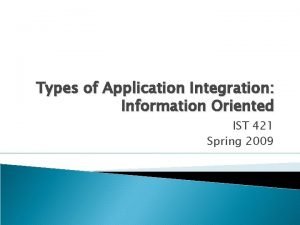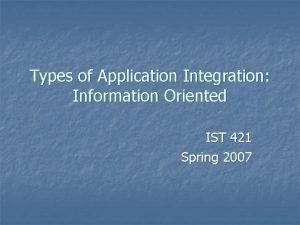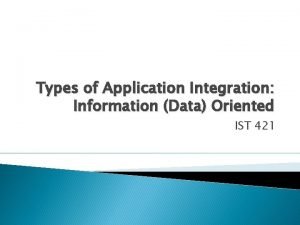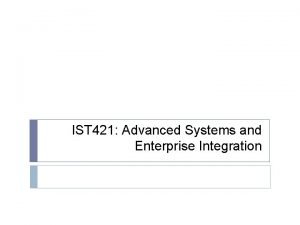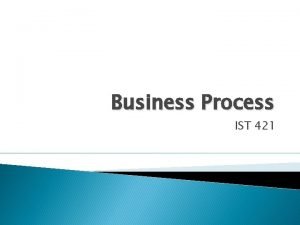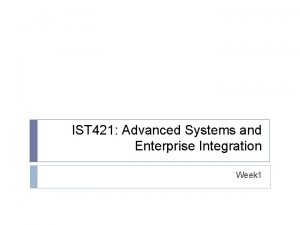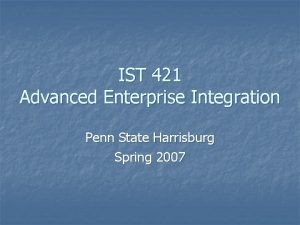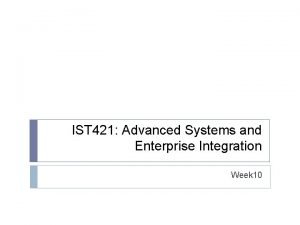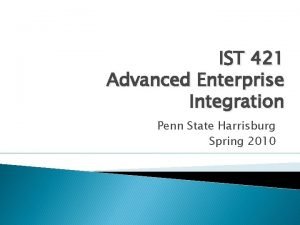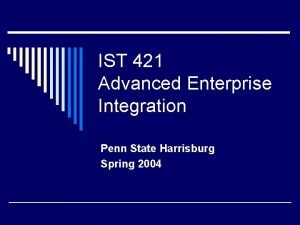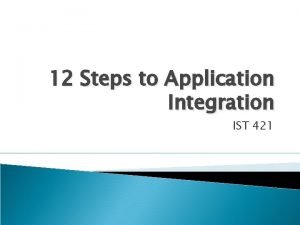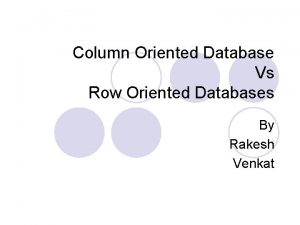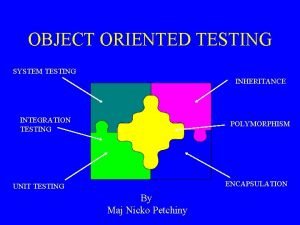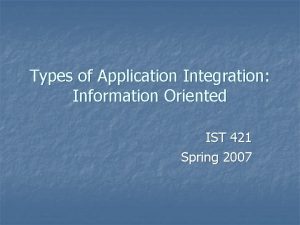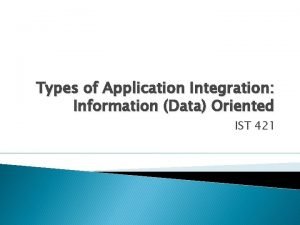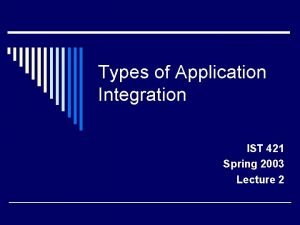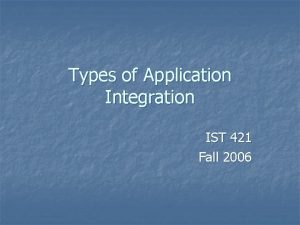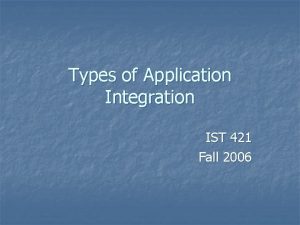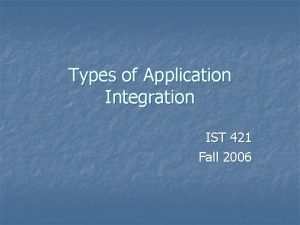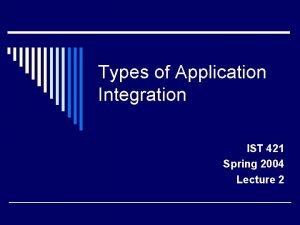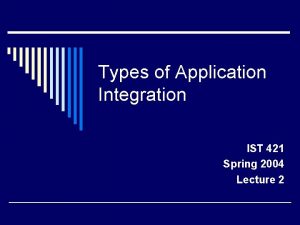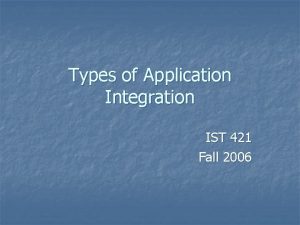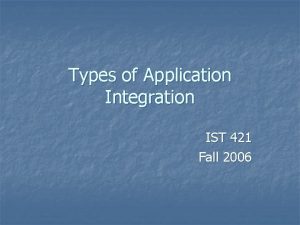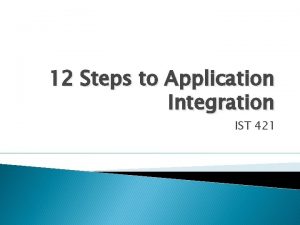Types of Application Integration Information Oriented IST 421


















- Slides: 18

Types of Application Integration: Information Oriented IST 421 Spring 2007

n Enterprise integration should enable organizations to become more agile and flexible. This means: Continuously monitor market demand n Quickly respond by providing new products, services & information n Quickly introduce new technologies n Quickly modify business methods n Lee, Siau, & Hong, Enterprise Integration with ERP and EAI, Communications Of the ACM, Vol. 46, Number 2, February 2003, 54 -60.

Coupling n n n The act of bringing together Binding logic with data; level of interdependency between the two components Problems: Creates one application and database out of many, each dependent on the other n Over time, a change to any system means a change to the coupled systems as well n

Cohesion n Act of “sticking” together Applications and databases are independent Changes to any source system should not affect the others

Coupling vs. Cohesion n n The goal is to have loosely coupled components so that there is little or no dependency Integration solutions should be cohesive rather than coupled

Integration Models n n An approach and configuration used to integrate software It emphasizes one or two of the following attributes: Simplicity of performing the integration n Reusability of integration for different configurations n Breadth of possible approaches to integration n Expertise required to perform integration n

Integration Models n There are four general categories to consider for integration: Information-oriented n Business process integration-oriented n Service-oriented n Portal-oriented n

Information-Oriented n Information-oriented approach suggests that integration should occur between databases Data replication n Data federation n Interface processing n

Information-Oriented n Data Replication Move data between two or more databases n Provide the infrastructure to exchange data n Advantages to this technique: n Simple n Low cost n

Data-Level Integration

Data-Level Integration n A variety of tools and data access middleware have been used to access and integrate at the data level Batch file transfer n Open Database Connectivity (ODBC) n Database access middleware – provide connectivity to distributed databases n Data transformation – convert data from source database format into target database format; EBCDIC to ASCII n

When to Use it n n n Combine data from multiple sources for analysis and decision making Provide multiple applications with read access to a common source of information Allow data to be extracted from one source and reformatted and updated in another

Data-Level Integration n Advantages: Tools and techniques currently exist n Relatively easy n Requires no changes to the application logic or database structure n Provides access to a wider range of data n Allows data to be reused across other applications n

Data-Level Integration n Disadvantages: n Need to rewrite business logic

Other Data Source to Consider n n n Relational databases IDMS IMS VSAM ISAM Flat files

Information Integration solution set that works: Identify the data n Catalog the data into a data dictionary n Reason for the data n Ownership n Format n Security n Role in the data structure n n Build the enterprise metadata model n Used as a master guide for integrating

Information Integration n n Maintain integrity issues Data latency Real time n Near time n One time n

Information Integration
 Information oriented application integration
Information oriented application integration Information-oriented approach
Information-oriented approach Information-oriented examples
Information-oriented examples Ist 421
Ist 421 Ist 421
Ist 421 Ist 421
Ist 421 Ist 421
Ist 421 Ist 421
Ist 421 Ist 421
Ist 421 Ist 421
Ist 421 Steps for application integration
Steps for application integration Trade oriented sales promotion
Trade oriented sales promotion What is a column row db
What is a column row db Winter kommt winter kommt flocken fallen nieder
Winter kommt winter kommt flocken fallen nieder Es war eine mutter
Es war eine mutter Es ist herbst bunte blätter fliegen
Es ist herbst bunte blätter fliegen Es ist herbst bunte blätter fliegen
Es ist herbst bunte blätter fliegen Zu glauben ist schwer. nichts zu glauben ist unmöglich
Zu glauben ist schwer. nichts zu glauben ist unmöglich Object oriented system testing
Object oriented system testing
